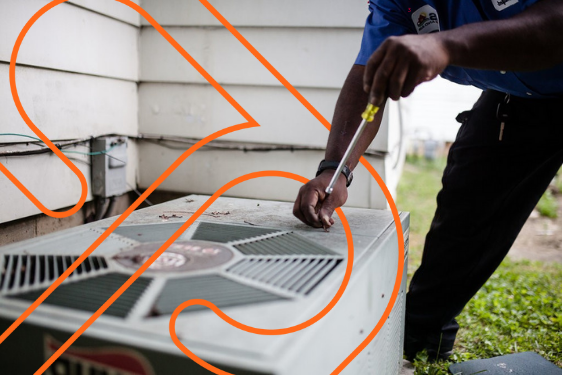As an HVAC contractor, it’s important to not only provide top-notch services to your clients, but also to track and measure your business’s success. This is where important HVAC contractor KPIs (Key Performance Indicators) come into play. By monitoring and analyzing these metrics, you can gain valuable insights into your company’s performance and make informed decisions for future growth. In this blog, we’ll discuss the five critical KPIs every HVAC contractor needs to track for success, and how they can help you stay ahead in the competitive HVAC market.
Understanding Key Performance Indicators (KPIs) in HVAC Contracting
In the HVAC contracting industry, understanding and monitoring Key Performance Indicators (KPIs) is essential for measuring business success. KPIs are specific metrics that can be used to assess the performance and progress of a successful HVAC contractor. These metrics provide valuable insights into various aspects of the business, allowing owners to make data-driven decisions and improve their operations.
KPIs encompass a wide range of measurements, including customer satisfaction, profitability, employee productivity, and project performance. By tracking these metrics, contractors can identify areas of improvement, measure their effectiveness, and benchmark themselves against industry standards. Successful HVAC contractors know that monitoring KPIs is not just a means of evaluation, but a way to proactively identify potential issues and opportunities for growth.
For example, a crucial performance indicator is customer satisfaction, which can be measured through surveys, testimonials, and online reviews. High customer satisfaction indicates that the contractor is providing exceptional services, while low satisfaction levels may indicate areas for improvement. Other HVAC success metrics may include project completion time, revenue per job, employee efficiency, and client retention rates.
Overall, understanding your KPIs is essential for any HVAC contractor looking to achieve and maintain success in a competitive market. By tracking and analyzing these metrics, contractors can identify strengths and weaknesses, make informed business decisions, and ultimately improve their bottom line.
The Role of KPIs in Gauging Business Success
Key Performance Indicators play a crucial role in gauging the success of any HVAC contracting business. These metrics provide valuable insights into various aspects of the business, allowing owners to make data-driven decisions and improve their operations. By tracking HVAC KPIs and understanding HVAC success metrics, contractors can effectively measure their performance and identify areas of improvement.
Monitoring these metrics enables contractors to assess how well they are meeting their customers’ needs and expectations, which is essential for success in a competitive market. High customer satisfaction levels indicate that the contractor is providing exceptional services, leading to repeat business and positive word-of-mouth referrals.
In addition, tracking HVAC success metrics like project completion time, revenue per job, employee efficiency, and client retention rates helps contractors measure their effectiveness and benchmark themselves against industry standards. These metrics provide valuable insights into the efficiency of business operations, allowing contractors to identify areas of strength and weakness.
Ultimately, the role of KPIs in gauging business success is to provide a clear picture of how well an HVAC contractor is performing. By analyzing and understanding these metrics, contractors can make informed business decisions and take proactive steps to improve their bottom line. HVAC contractors who prioritize monitoring KPIs and aligning their strategies with these metrics are more likely to achieve long-term success in their market.
Five Essential KPIs for HVAC Contracting Businesses
When it comes to measuring success as an HVAC contractor, there are five essential KPIs (Key Performance Indicators) that you should be tracking. These KPIs will give you valuable insights into your business’s performance and help you make informed decisions for future growth. Let’s take a look at the five critical HVAC KPIs that every HVAC contractor needs to track for success.
1. Customer Satisfaction
This is a crucial HVAC KPI as it reflects how well you are meeting your customers’ needs and expectations. Happy customers lead to repeat business and positive word-of-mouth referrals, which are essential for the success of your HVAC contracting business.
2. Profitability
Tracking your profitability is vital to ensure that your business is generating enough revenue and making a healthy profit. By analyzing this metric, you can identify areas where you can cut costs, increase efficiency, and maximize your profits.
3. Employee Productivity
Your employees play a significant role in the success of your HVAC contracting business. By tracking employee productivity, you can identify top-performing employees, assess the efficiency of your workforce, and implement strategies to improve overall productivity.
4. Project Performance
Monitoring the performance of your projects is crucial to ensure timely completion and high-quality work. This helps you measure your project’s success and identify any areas that need improvement to provide better service to your clients.
5. Client Retention Rates
Building strong relationships with your clients is essential for the long-term success of your HVAC contracting business. Tracking client retention rates will help you gauge how well you are retaining your existing clients and identify any issues that may be affecting client loyalty.
By tracking these five essential HVAC KPIs, you can measure your business’s success, identify areas of improvement, and implement strategies to achieve HVAC contractor success. Don’t underestimate the power of tracking your KPIs to stay ahead in the competitive HVAC market.
Best Practices on Tracking KPIs in HVAC Contracting
To ensure success, it’s essential for HVAC contractors to have best practices in place for tracking KPIs. Here are some tips to help you effectively monitor and analyze your KPIs for maximum impact.
First, establish clear goals and objectives for your HVAC contracting business. These goals should be specific, measurable, attainable, relevant, and time-bound (SMART). By setting SMART goals, you can align your KPI tracking efforts with your overall business strategy.
Next, identify the most relevant KPIs for your business. While there are standard KPIs like customer satisfaction and profitability, consider tailoring your metrics to the specific needs and challenges of your HVAC contracting business. This could include tracking metrics related to technician efficiency, equipment maintenance, or energy savings for your clients.
Invest in reliable data collection and tracking systems. Whether it’s a customer feedback tool, project management software, or employee productivity tracking system, having robust technology in place will streamline the process of gathering and analyzing KPI data.
Regularly review and analyze your KPI data. This should be done on a weekly or monthly basis, depending on the specific KPI. Look for trends, patterns, and areas of improvement. Use this data to inform your decision-making and drive continuous improvement within your business.
Finally, communicate and share your KPI results with your team. By involving your employees in the tracking and analysis process, you can foster a culture of accountability and collective responsibility for achieving HVAC contractor success.
By implementing these best practices, you can effectively track your KPIs and make informed decisions to drive your HVAC contracting business towards long-term success.
Adapting and Improving Your HVAC Business Strategy with KPIs
Adapting and improving your HVAC business strategy with KPIs is an essential step towards long-term success. Once you have tracked and analyzed your key performance indicators, it’s time to take action and make strategic decisions to propel your business forward.
First, use the insights gained from your KPI data to identify areas of improvement. Are there any patterns or trends that suggest inefficiencies or opportunities for growth? For example, if you notice a high client churn rate, you may need to focus on enhancing customer retention strategies. On the other hand, if your profitability metrics are lower than expected, it may be time to evaluate your pricing structure or cost-saving measures.
Once you have identified the areas that need attention, develop an action plan to address them. Set specific goals and objectives based on your KPI findings, and outline the steps required to achieve them. This could include implementing employee training programs, optimizing project management processes, or enhancing customer service initiatives.
Regularly review and update your KPIs to ensure they align with your evolving business goals. As your HVAC contracting business grows and adapts to industry trends, your KPIs may need to be modified to reflect new priorities. Stay agile and flexible, using your KPIs as a compass to guide your decision-making process.
By continuously tracking and leveraging KPI data, you can adapt and improve your HVAC business strategy, staying ahead of the competition and ensuring long-term success. Remember, KPIs are not just numbers on a spreadsheet; they are powerful tools that can inform and shape the future of your business. Embrace them, and watch your HVAC contracting business thrive in the competitive market.
Learn more about the key KPIs for HVAC Contractors
In our FREE 90-minute Starter Session, we will coach you on implementing some of the most important KPIs to understand and use daily to ensure long-term profitability. Book your Starter Session Now.





